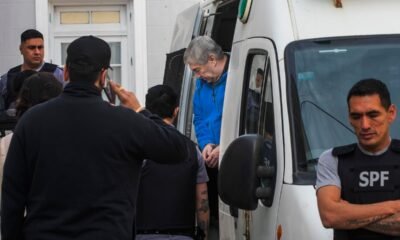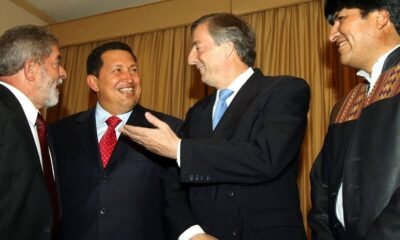INTERNACIONAL
Trump’s gamble in normalizing relations with Syria in the face of Iran: ‘high-risk, high-reward’
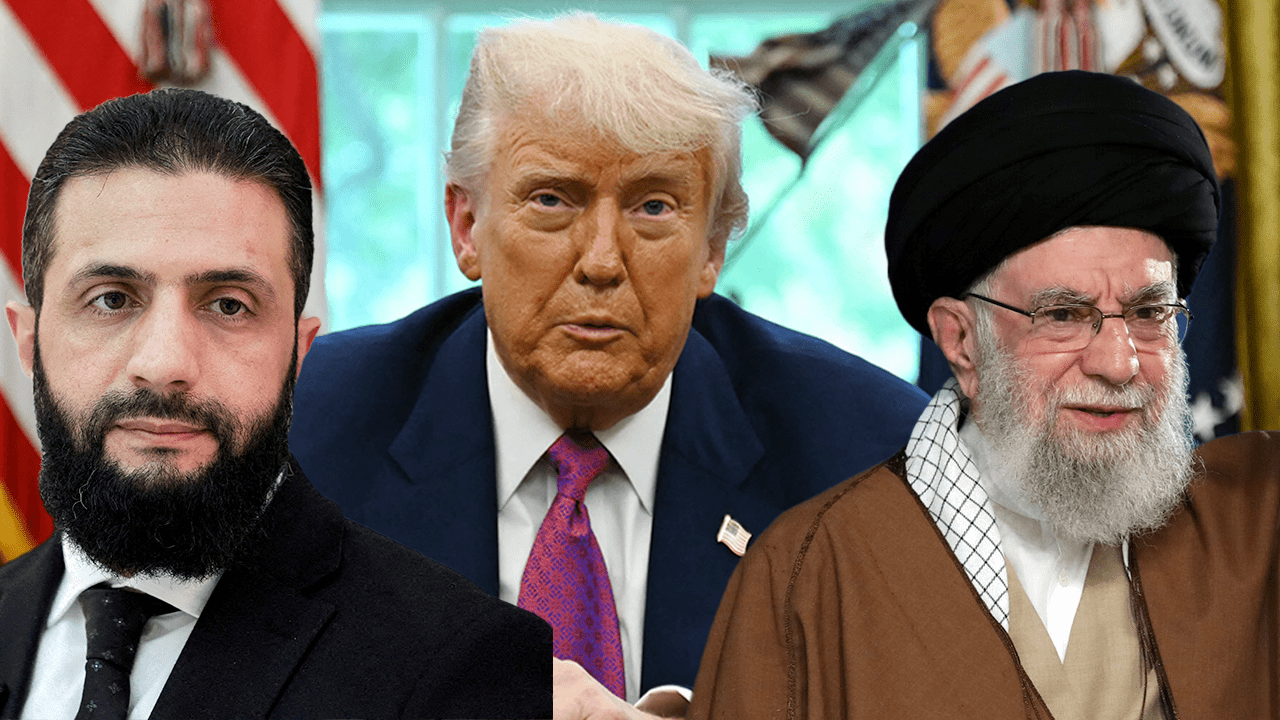
President Donald Trump last week announced he would normalize U.S. relations with Syria by lifting decades-old sanctions, and he became the first American president to meet with the leader of the Middle Eastern nation in 25 years – a move that some have seen as an indirect hit on Iran.
The news was a surprising shift from Trump’s prior position in which he said in a December post that «Syria is a mess, but is not our friend, & THE UNITED STATES SHOULD HAVE NOTHING TO DO WITH IT.»
Trump’s change of posture is a gamble that could see serious gains regarding regional stability and securing U.S. interests by deterring Iranian influence, explained Behnam Ben Taleblu, Iran expert and senior fellow with the Foundation for Defense of Democracies.
President Donald Trump, Syrian President al-Sharaa and Crown Prince Mohammed bin Salman. (Reuters)
US AMBASSADOR BARRACK NAMED SPECIAL ENVOY TO SYRIA AMID SANCTIONS RELIEF PLAN
«This is what I call a high-risk, high-reward gamble, but one that, if achieved successfully, can actually prevent Syria from being a launching pad for more Iranian malign activity,» Ben Taleblu told Fox News Digital. «But if it fails, . . . Washington would have ended up empowering a jihadist government in Damascus [that] does not have full control over its own territory.»
The December collapse of the Bashar al-Assad regime following the takeover by Hay’at Tahrir al-Sham (HTS), a former al-Qaeda affiliate, not only signified an end to a decades-long oppressive regime, it also effectively dismantled years of Iranian investment in a major setback to its regional influence.
Trump emphasized that this sanctions relief, which he argued will give the country a chance to recover and was soon followed by an EU order to lift sanctions, is a move to encourage Syria to normalize diplomatic ties with Israel.
But Syrian President Ahmed al-Sharaa, who is also the leader of HTS, which is still a designated terrorist group under the U.S. and the UN, has not officially agreed to pursue diplomatic ties with Jerusalem – a push several Middle Eastern nations have flatly rejected amid its aggressive military operations in the Gaza Strip.
Trump also emphasized that the new Syrian government needs to suppress the rise of Islamic extremist groups, which Ben Taleblu pointed out is going to be one of the nation’s chief vulnerabilities as it looks to completely re-establish itself in the world order as trade, business and diplomacy have been reopened to Damascus.
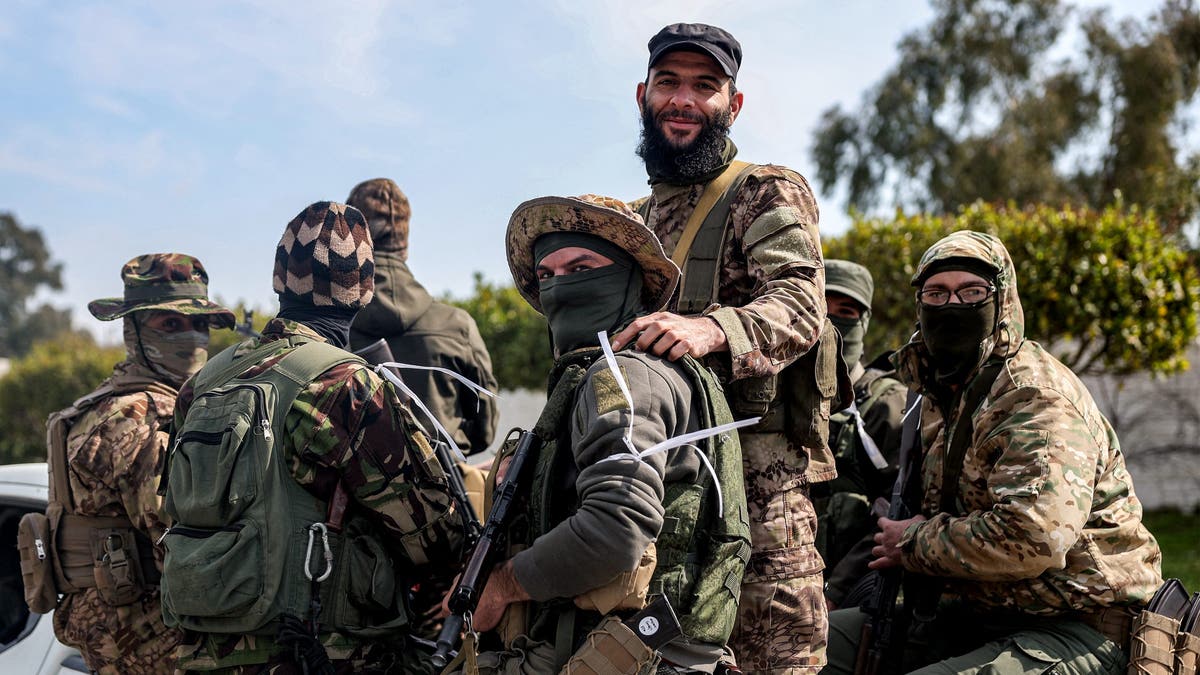
Security forces loyal to the interim Syrian government ride in the back of a vehicle moving along a road in Syria’s western city of Latakia on March 9, 2025. Syria’s interim President Ahmed al-Sharaa called for national unity and peace on March 9, amid growing international backlash following the killing of civilians along the country’s coast in the worst violence since the overthrow of former president Bashar al-Assad. (OMAR HAJ KADOUR/AFP via Getty Images)
IRAN’S KHAMENEI LAUNCHES BLISTERING ATTACK ON TRUMP AFTER MIDDLE EAST VISIT
«Tehran traditionally responds to these sorts of things with patience. The Islamic Republic has an ideological view of the way the region should be oriented, and has put time, money, resources, blood and treasure towards that,» Ben Taleblu said.
The Iran-expert explained that Tehran is waiting for the U.S. and Israel to loosen its pressure on the regime and its proxies, «and for Washington and Jerusalem to make mistakes in the region as they try to push towards bigger-picture things – like flipping Syria or regional peace and stability.»
«And it is there that in the interim, while Washington focuses up on building up states that Tehran will focus on building up proxies and partners,» he added.
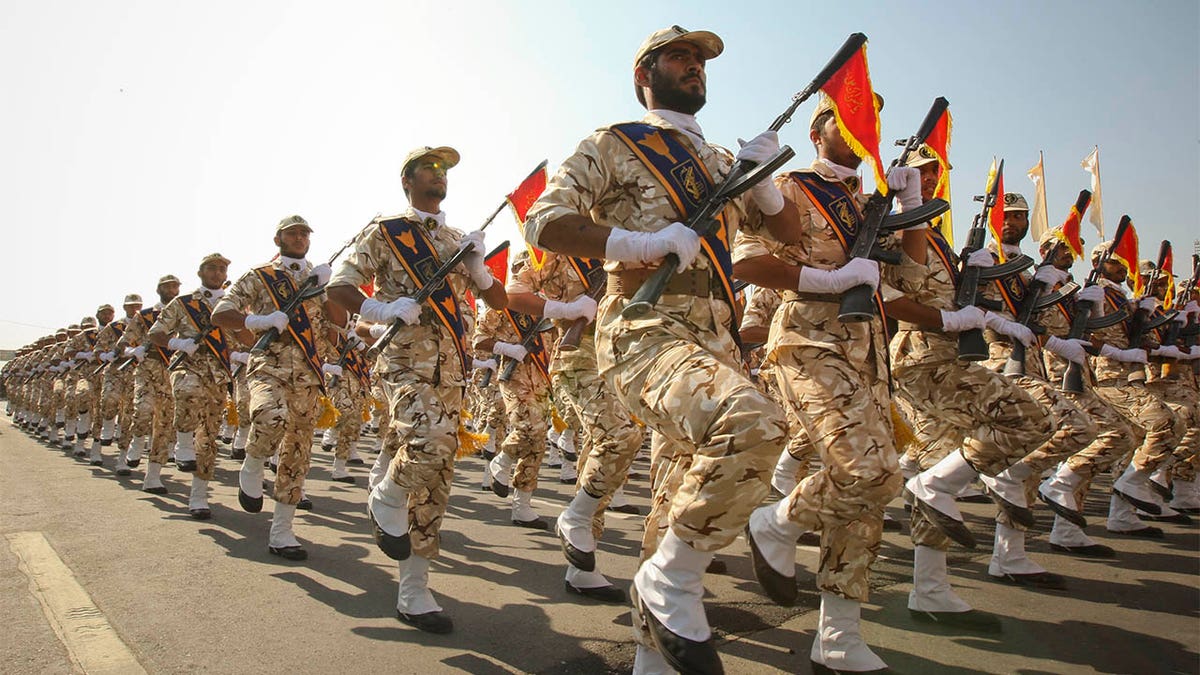
FILE- Members of the Iranian revolutionary guard march during a parade. The IRGC is designated as a foreign terrorist organization by the State Department. A large part of its work is to covertly operate outside of Iran. (Reuters.) (Reuters)
Syria is not a united nation as conflict persists across the country between varying minority groups, former regime loyalists and terrorist organizations like ISIS.
Secretary of State Macro Rubio also warned lawmakers on Tuesday that Syria could be just «weeks» away from a «potential collapse and a full-scale civil war of epic proportions.»
These fractures pose a significant vulnerability for the new Syrian government.
«Whenever there is a downtrodden or dispossessed person in a war zone or in a conflict zone, that is Tehran’s angle of entry back into a conflict,» Ben Taleblu said. «This has been Iran’s strategy, sitting and waiting and looking to exploit opportunities across the entire northern tier of the Middle East, from Iraq to Syria to Lebanon.
«Exploiting disarray is a specialty of the Islamic Republic,» he warned.

People wave guns in the air as they gather to celebrate the fall of the Syrian regime in Umayyad Square on Dec. 8 in Damascus, Syria. (Ali Haj Suleiman/Getty Images)
CLICK HERE TO GET THE FOX NEWS APP
The expert explained that if the Trump administration wants to ensure that Iran is unable to exploit vulnerable populations in Syria, then it will need to press Damascus to address the sweeping concerns facing various groups across the country.
Though the president, and his constituents, notoriously opposed nation-building, which could spell trouble for the long-term security of Syria as it sits in Iran’s shadow.
«Tehran is going to be playing the long game. It’s going to be running the clock when it comes to American and Israeli patience for what the future regional order could look like,» Ben Taleblu warned.
INTERNACIONAL
Trump admin agencies coordinating to expose Biden admin’s ‘prolific and dangerous’ weaponization of government

NEWYou can now listen to Fox News articles!
EXCLUSIVE: Trump administration agencies are working to expose the Biden administration’s «prolific and dangerous weaponization of government,» Fox News Digital has learned.
The Interagency Weaponization Working Group (IWWG) is made up of officials from the Office of the Director of National Intelligence, the Justice Department, the FBI, the CIA and more.
Officials told Fox News Digital that Director of National Intelligence Tulsi Gabbard initiated the Interagency Weaponization Working Group, which has been meeting biweekly since April to «share information, coordinate, and execute.»
Director of National Intelligence Tulsi Gabbard announced on Tuesday the revocation of former intelligence officials’ credentials. (Chip Somodevilla/Getty Images)
DOJ TASK FORCE FINDS NUMEROUS INSTANCES OF ANTI-CHRISTIAN GOVERNMENT BIAS UNDER BIDEN
«The American people made a clear choice when they elected President Trump — to stop the Biden administration’s prolific and dangerous weaponization of government agencies against the American people and the Constitution,» Gabbard told Fox News Digital. «I stood up this working group to start the important work of interagency coordination under President Trump’s leadership to deliver accountability.»
She added: «True accountability is the first step toward lasting change.»
Officials told Fox News Digital the group was created to streamline information sharing across the government in support of the Trump executive order.
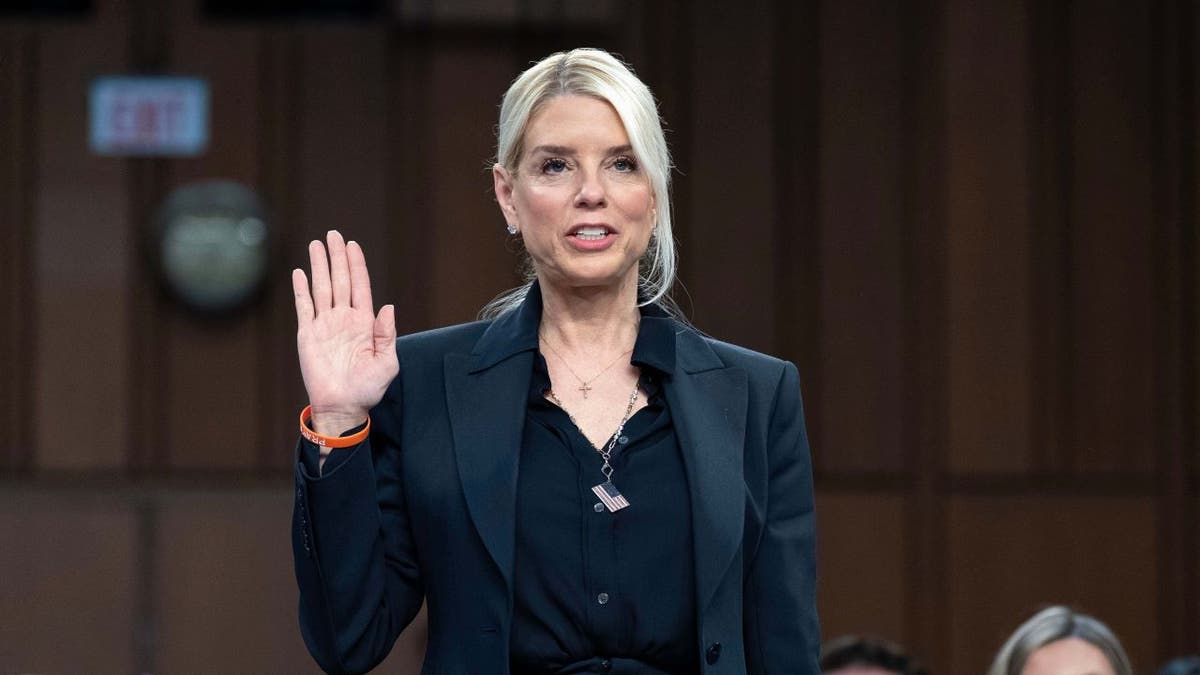
Attorney General Pam Bondi is sworn in before a Senate Judiciary Committee oversight hearing on Capitol Hill in Washington, Tuesday, Oct. 7, 2025. (Jose Luis Magana/AP Photo)
«Joe Biden’s Department of Justice targeted President Trump and anyone close to him, prosecuted pro-life advocates, treated parents at school board meetings as domestic terrorists, and destroyed public trust in federal law enforcement,» Attorney General Pam Bondi told Fox News Digital.
GABBARD FIRES ‘DEEP STATE’ HEADS OF NATIONAL INTELLIGENCE COUNCIL TO ROOT OUT ‘POLITICIZATION OF INTEL’
«Under President Trump, we are working every day alongside our partners to end weaponization and restore one tier of justice for all,» Bondi said.
Meanwhile, FBI Director Kash Patel told Fox News Digital that, «for years, Biden’s DOJ turned federal law enforcement into a political weapon.»
FLASHBACK: HOUSE WEAPONIZATION PANEL RELEASES 17,000-PAGE REPORT EXPOSING ‘TWO-TIERED SYSTEM OF GOVERNMENT’
«Going after President Trump, pro-life Americans, and parents at school boards while letting real criminals run wild,» Patel told Fox News Digital. «Under Preisdent Trump, we’ve ripped that agenda out by the roots.»
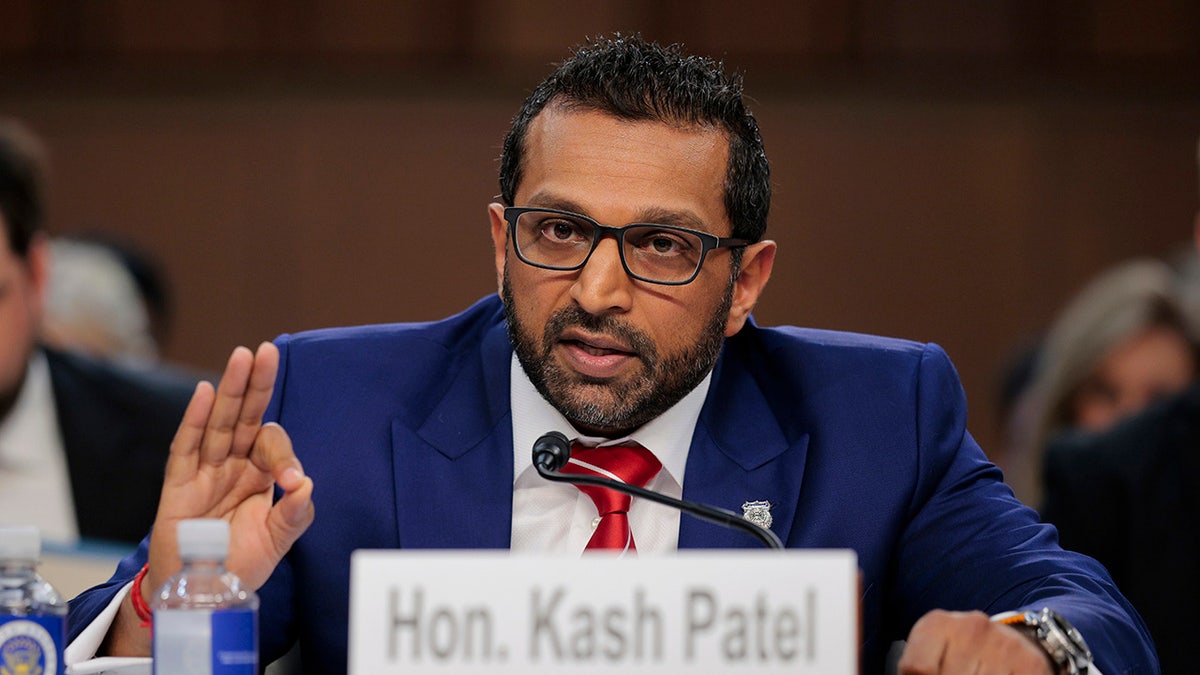
Federal Bureau of Investigation Director Kash Patel testifies before the Senate Judiciary Committee in the Hart Senate Office Building on Capitol Hill on Sept. 16, 2025 in Washington, D.C. (Chip Somodevilla/Getty Images)
Patel added: «We’re restoring equal justice under the law, one standard, one mission: Protect the American people.»
Officials involved pointed Fox News Digital to President Trump’s executive order, which says interagency coordination is needed to «ensure accountability for the previous administration’s weaponization of the federal government against the American people.»
GABBARD ESTABLISHES NEW INTELLIGENCE COMMUNITY TASK FORCE TO RESTORE TRANSPARENCY
The executive order had directed Gabbard, in consultation with the heads of other appropriate departments and agencies within the intelligence community, to «take all appropriate action to review the activities of the intelligence community over the last four years and identify any instances» of the weaponization of government.
Officials told Fox News Digital that the interagency group is «working to undo the Biden administration’s whole-of-government approach to abuse the powers of government against the American people.»
«The weaponization of government against Americans did not happen in one agency, one time,» an official explained. «It happened repeatedly over the duration of the Biden administration.»
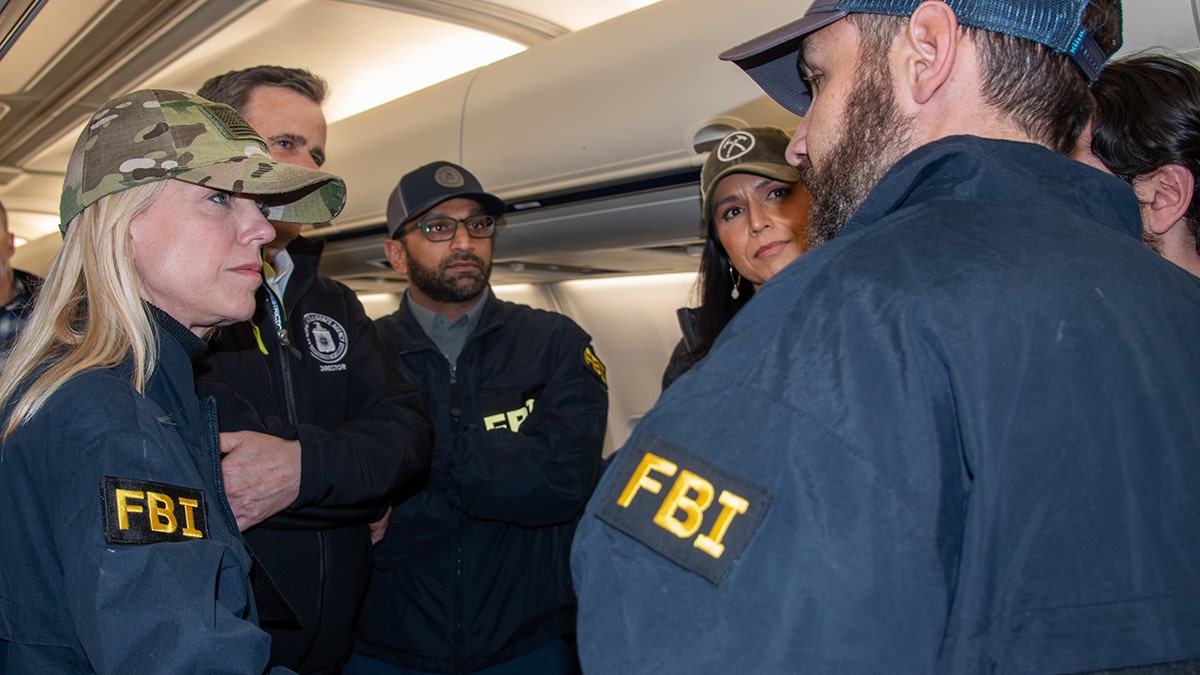
Attorney General Pam Bondi, left, FBI Director Kash Patel, center, and Director of National Intelligence Tulsi Gabbard, center right, are seen on Wednesday, March 5, awaiting Muhammed Sharifullah’s arrival in the U.S. following his arrest overseas. (Justice Department)
FLASHBACK: FBI INTERVIEWED PRIEST, CHURCH CHOIR DIRECTOR AHEAD OF ANTI-CATHOLIC MEMO, HOUSE GOP FINDS
«That’s why, in order to depoliticize and deweaponize the government, it is important to understand what agencies carried out, what roles, and why,» the official continued. «The IWWG is essential for coordinating across agencies.»
But officials said the media has attempted to «negatively spin lawful oversight and accountability» by claiming it is a way for the Trump administration to weaponize the government against its political opponents.
FLASHBACK: BIDEN CAMPAIGN, BLINKEN ORCHESTRATED INTEL LETTER TO DISCREDIT HUNTER BIDEN LAPTOP STORY, EX-CIA OFFICIAL SAYS
«The irony is, accusing the Interagency Weaponization Working Group of targeting the president’s political opponents is classic projection and could not be further from the truth,» an official said.
The official said that there is «no targeting of any individual person for retribution.»
CLICK HERE TO GET THE FOX NEWS APP
«IWWG is simply looking at available facts and evidence that may point to actions, reports, agencies, individuals, and more who illegally weaponized the government in order to carry out political attacks,» the official said.
«The only people who fear accountability are the ones who never expected to face it,» the official continued. «Oversight is not the problem—abuse of power is.»
joe biden,tulsi gabbard,pam bondi,kash patel,justice department,cia,fbi
INTERNACIONAL
Brasil desafía a los ecologistas con un megaproyecto petrolero en el Amazonas

El Gobierno de Brasil estima que el nuevo horizonte petrolero frente al río Amazonas, cuya exploración fue autorizada este lunes por la agencia ambiental del país, atraerá inversiones por unos 300.000 millones de reales (55.000 millones de dólares).
El Instituto Brasileño de Medio Ambiente (Ibama) concedió a la petrolera estatal Petrobras el permiso para perforar un pozo exploratorio en una zona del Atlántico situada a unos 500 kilómetros de la desembocadura del Amazonas y a unos 175 kilómetros de la costa.
La decisión, cuestionada por las organizaciones ecologistas, se produjo a menos de un mes de que comience la cumbre climática de la ONU (COP30), que se celebrará en la ciudad amazónica de Belém.
Sin embargo, el ministro de Minas y Energía, Alexandre Silveira, afirmó que ese nuevo horizonte petrolero, cuyo potencial es de 10.000 millones de barriles recuperables, representa “el futuro de la soberanía energética” de Brasil.
“Brasil no puede renunciar a conocer su potencial. Hicimos una defensa firme y técnica para garantizar que la exploración se realice con total responsabilidad ambiental (…) Nuestro petróleo es uno de los más sostenibles del mundo”, aseguró en una nota.

Según estimaciones oficiales, además de atraer una cantidad importante de inversiones, si finalmente se materializa la explotación de hidrocarburos en la región, conocida como Margen Ecuatorial, el Estado brasileño recaudará “un billón de reales (cerca de 200.000 millones de dólares) en las próximas décadas”.
Además, el Ejecutivo del presidente Luiz Inácio Lula da Silva prevé la creación de 300.000 empleos directos e indirectos.
Silveira subrayó que la exploración del territorio se llevará a cabo “bajo los más altos estándares de sostenibilidad, conciliando la preservación ambiental con la generación de empleo e ingresos”.
Y recordó que Petrobras montó “la mayor estructura de respuesta del país, con 13 embarcaciones a disposición para apenas un pozo”.
“La decisión refuerza el compromiso del Gobierno con una transición energética justa, inclusiva y equilibrada, en la que el desarrollo de las actividades de exploración y producción de petróleo y gas avanza de la mano con las políticas de descarbonización y expansión de los biocombustibles”, señaló el ministro.

Por otra parte, ONG ambientalistas cargaron este lunes contra la concesión de la licencia. El Observatorio do Clima, un red formada por 130 organizaciones, señaló en un comunicado que se trata de una decisión “desastrosa” desde el punto de vista ambiental y pedirán ante la justicia que el permiso sea “anulado” por las “fallas técnicas” en el proceso de licenciamiento.
La red ambientalista apuntó, además, a la contradicción que supone dar esta licencia a menos de un mes del inicio de la COP30.
La decisión es un “sabotaje” a la COP30 y “va en dirección contraria al papel de líder climático reivindicado por el presidente Luiz Inácio Lula da Silva”, de acuerdo con el Observatorio do Clima.
Asimismo, la licencia para explorar esta área, situada a unos 500 kilómetros de la desembocadura, choca, según los ambientalistas, con las metas del Gobierno brasileño, que se ha comprometido a reducir entre un 59 % y un 67 % las emisiones contaminantes hasta 2035.

“En un escenario de emergencia climática como el actual, la apertura de nuevos pozo de petróleo contradice los compromisos del país con la transición energética y refuerza patrones excluyentes e insostenibles”, señaló la portavoz de Greenpeace Mariana Andrade, en declaraciones distribuidas a los medios.
Brasil, según los ambientalistas, debería invertir más en energías renovables, en vez de ampliar su producción de petróleo.
“Necesitamos invertir en alternativas que generen desarrollo inclusivo y sostenible, como las energías renovables y la bioeconomía; insistir en el petróleo es ir en dirección contraria al mundo”, dijo, a su vez, Ricardo Fuji, especialista en conservación de WWF en Brasil.
Alrededor del área objeto de la licencia hay reservas ambientales, territorios indígenas, manglares y arrecifes de coral, así como una variada diversidad marina con especies en peligro de extinción.
La petrolera tiene planes para explorar la región desde 2022, pero el proceso de autorización se alargó durante casi cinco años, ante los pedidos de información adicional por parte del Instituto Brasileño de Medio Ambiente (Ibama), la entidad responsable de emitir los permisos.
(Con información de EFE)
South America / Central America,RIO DE JANEIRO
INTERNACIONAL
NYC mayoral rivals unite against billionaire ‘election interference’ as campaign enters final stretch
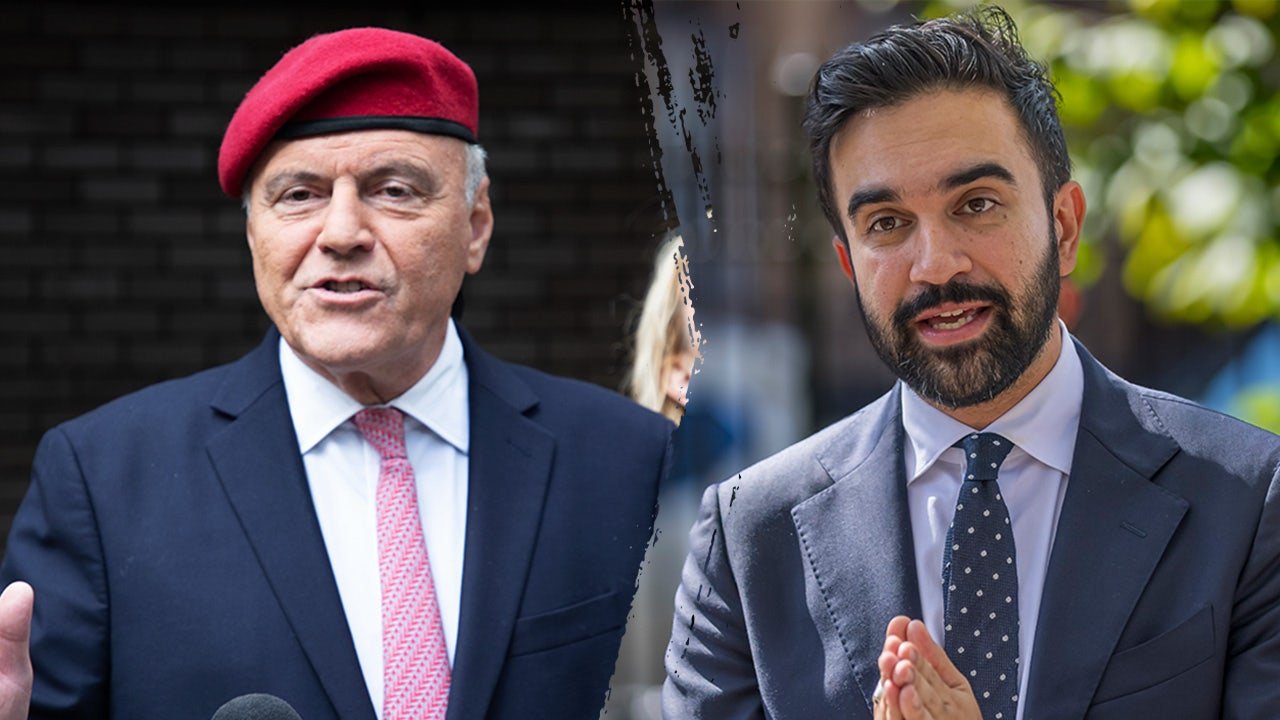
NEWYou can now listen to Fox News articles!
With two weeks until Election Day, Democratic nominee Zohran Mamdani and Republican nominee Curtis Sliwa have landed on unlikely common ground: rejecting billionaire influence in the New York City mayoral election.
Two billionaires, Red Apple Media CEO John Catsimatidis and hedge fund CEO Bill Ackman, are calling on Sliwa to drop out of the mayoral race in order to clear a pathway to victory for former Gov. Andrew Cuomo, who is running as an Independent candidate.
«The billionaires can conspire to pick their candidate,» Sliwa said during a press conference in Manhattan on Monday. «I trust the people. They will make the decision. I will not drop out.»
BILL ACKMAN JUMPS INTO NYC MAYORAL FIGHT, SAYS SLIWA MUST DROP OR ‘WE ARE TOAST’
New York City mayoral nominee Curtis Sliwa speaks to reporters in Manhattan on Monday, Oct. 20, 2025, with two weeks until Election Day. (Fox News Digital/Deirdre Heavey)
Several blocks downtown at his own press conference Monday morning, Mamdani admitted his surprise to agree with Sliwa.
«I never thought I would say this, but here we are, where the only candidates who agree that billionaires shouldn’t control the future of this city are the Republican nominee and the Democratic nominee,» Mamdani said.
Catsimatidis, who is also the CEO of WABC Radio, publicly urged Sliwa to drop out of the race on Monday. Sliwa has long hosted a radio program on WABC but is on leave while he runs for mayor.
«Curtis would make the best mayor of all the candidates … but Curtis has to realize that he should love New York more than anything else,» he said. «It certainly looks like Curtis should pull out right now.»
«I’m not dropping out,» Sliwa reaffirmed to reporters on Monday while responding to Catsimatidis’ plea.
TOP 5 MOMENTS FROM FIERY NYC MAYORAL DEBATE: ‘HE LITERALLY HAS NEVER HAD A JOB’
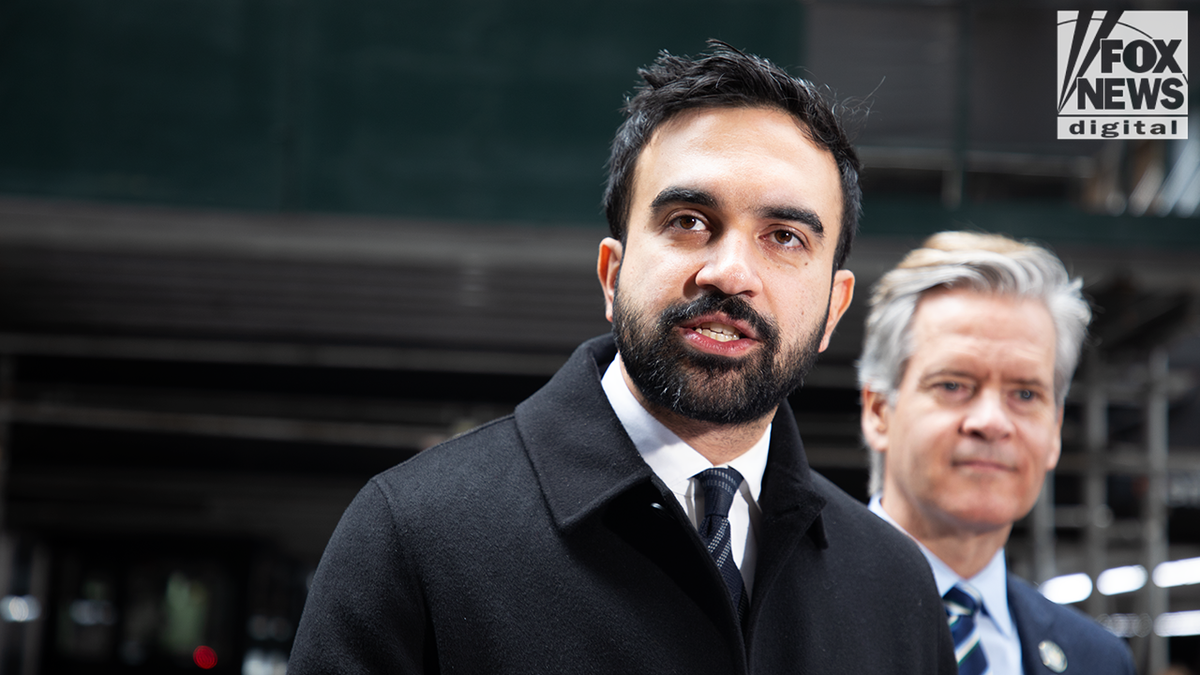
New York City Democratic mayoral nominee Zohran Mamdani fields reporter questions in Manhattan on Monday, Oct. 20, 2025. (Fox News Digital/Deirdre Heavey)
A recent Fox News survey of the mayoral race, conducted Oct. 10–14, asked voters about their second-choice candidate. If both Adams and Sliwa are out, the results show Mamdani keeping a significant lead, even as support for Cuomo increases.
With Sliwa out, the poll found Mamdani would pick up 50% compared to 37% to Cuomo.
Yet, Cuomo on Monday said that when New Yorkers realize that Sliwa dropping out would create a head-to-head matchup with Mamdani, «they’ll discard the spoiler Curtis Sliwa and rally behind Cuomo to save the city.»
When asked who bears responsibility if Mamdani is elected mayor, Sliwa told Fox News Digital on Monday, «We blame Andrew Cuomo.»
«I would suggest to Andrew Cuomo, stop this nonsense. You are the one who is responsible for Zohran Mamdani. You got beaten mightily in a Democratic primary,» Sliwa said when asked about Cuomo calling him a «spoiler.»
Mamdani on Sunday responded to a viral clip of Sliwa reiterating that he will stay in the race, despite pleas from billionaires, like Ackman.
«It’s genuinely positive for our democracy that there’s another candidate in this race who believes NYC voters should pick their next mayor, not billionaires who mostly live somewhere else,» Mamdani said in the post.
CUOMO RALLIES BUSINESS LEADERS AGAINST SOCIALIST CANDIDATE AS NYC MAYORAL RACE REACHES BOILING POINT

Republican candidate Curtis Sliwa, left, speaks while participating in a mayoral debate with Democratic candidate Zohran Mamdani, right, and independent candidate former New York Gov. Andrew Cuomo (not pictured), Thursday, Oct. 16, 2025, in New York. (AP Photo/Angelina Katsanis, Pool)
Ackman and Catsimatidis are among those billionaires arguing that a vote for Sliwa is a vote for Mamdani.
«Like that Ackman, out in Chappaqua, what does he know about New York City?» Sliwa questioned on Monday, telling reporters that billionaires «have paved the way for Zohran Mamdani because every time they fail, it makes it easier for Zohran Mamdani to campaign.»
«They should stay out of it, focus on Wall Street, hedge funds. They know nothing about the streets, as clearly evidenced by their panic,» Sliwa said, urging billionaires to «let the people decide.»
«Billionaires should be ashamed of themselves for interfering with this election. I call it election interference. Let the people decide. That’s the way I was raised. That’s the way everybody was raised. Nobody was ever told the billionaires were going to pick the person who wins an election.»
CLICK HERE TO DOWNLOAD THE FOX NEWS APP
Mamdani agreed with his Republican opponent on Monday, arguing that New Yorkers «no matter what they think about our politics, want to make their own decisions, and that is one place where Curtis and I agree, which is that it’s time for New Yorkers to make this decision, not for billionaire donors to decide who gets to run this city.»
«To have a candidate spending all his time pleading with another candidate to get, it shows that he doesn’t have much to share with New Yorkers himself,» Mamdani said of Cuomo.
Fox News Digital reached out to Cuomo for comment but did not immediately receive a response.

 CHIMENTOS2 días ago
CHIMENTOS2 días agoLa fuerte actitud de Manu Urcera con Indiana Cubero que reveló la verdad de la interna familiar: “El saludo del piloto a la hija de Nicole Neumann por su cumpleaños”

 POLITICA2 días ago
POLITICA2 días agoUn juez federal rechazó el habeas corpus presentado por Lázaro Báez y ordenó trasladarlo a la cárcel de Ezeiza

 POLITICA2 días ago
POLITICA2 días ago“El Pollo” Carvajal revela cómo Chávez pagaba a Kirchner, Lula y Petro con dinero del narcotráfico












